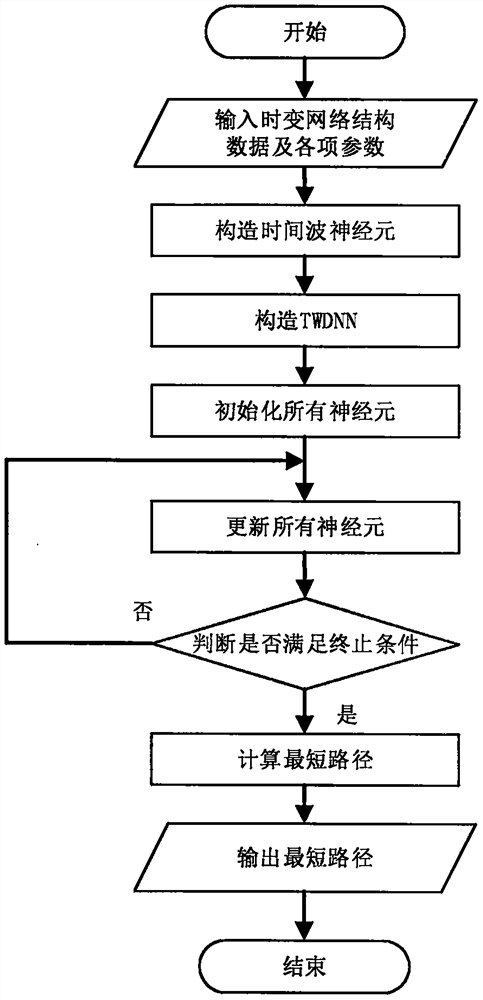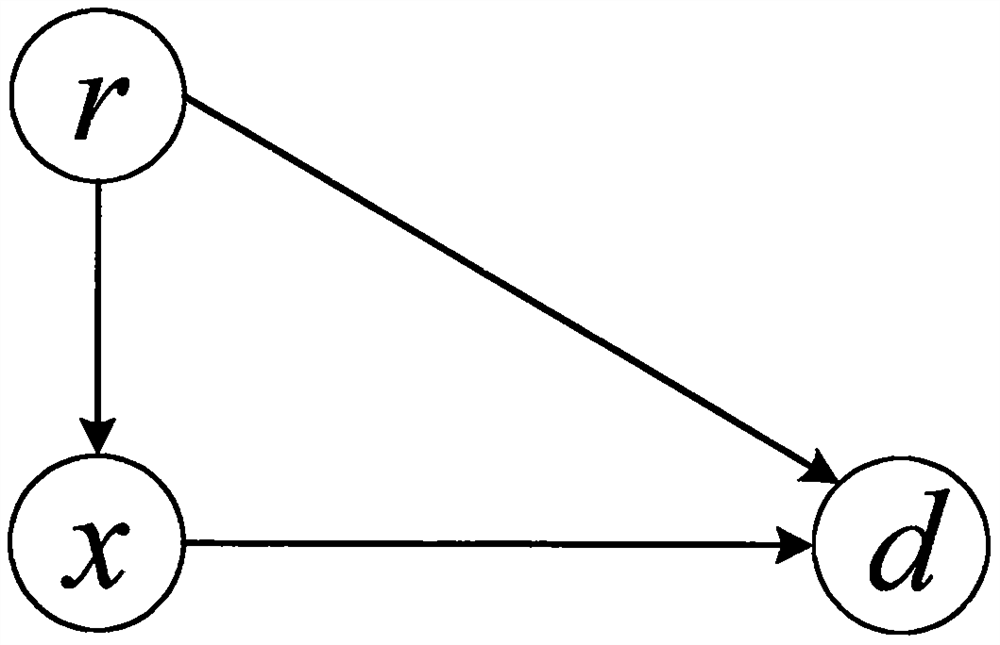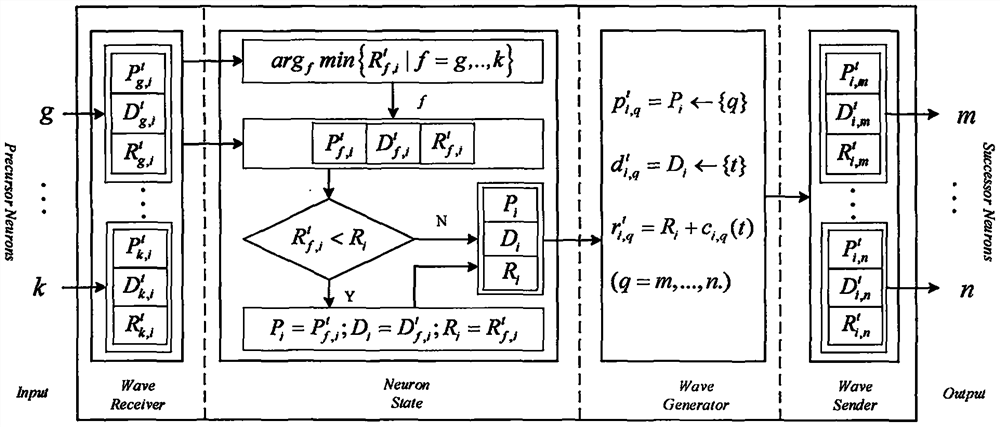Constraint time-varying shortest path solving method based on time wave delay neural network
A neural network, shortest path technology, applied in neural learning methods, biological neural network models, neural architectures, etc., can solve problems such as poor accuracy and slow calculation speed
- Summary
- Abstract
- Description
- Claims
- Application Information
AI Technical Summary
Problems solved by technology
Method used
Image
Examples
Embodiment Construction
[0051] The present invention will be described in detail below in conjunction with the accompanying drawings and examples.
[0052] A constrained time-varying shortest path solution method based on time-wave-delay neural network. The overall process of solving the constrained time-varying shortest path is as follows: figure 1 Shown; for the time-varying network of three nodes, the constrained time-varying shortest path is solved, the constraint cost is 3, and the network structure is as follows figure 2 As shown, the transmission time function and transmission cost function of each side in the network are shown in Table 1. The specific implementation plan includes the following contents and steps:
[0053] Table 1 Transmission time function and transmission cost function of each side in the network
[0054]
[0055] The first step is to construct a time wave neuron. For each neuron, construct six parts: input, wave receiver, neuron state, wave generator, wave sender, and...
PUM
 Login to View More
Login to View More Abstract
Description
Claims
Application Information
 Login to View More
Login to View More - R&D
- Intellectual Property
- Life Sciences
- Materials
- Tech Scout
- Unparalleled Data Quality
- Higher Quality Content
- 60% Fewer Hallucinations
Browse by: Latest US Patents, China's latest patents, Technical Efficacy Thesaurus, Application Domain, Technology Topic, Popular Technical Reports.
© 2025 PatSnap. All rights reserved.Legal|Privacy policy|Modern Slavery Act Transparency Statement|Sitemap|About US| Contact US: help@patsnap.com



